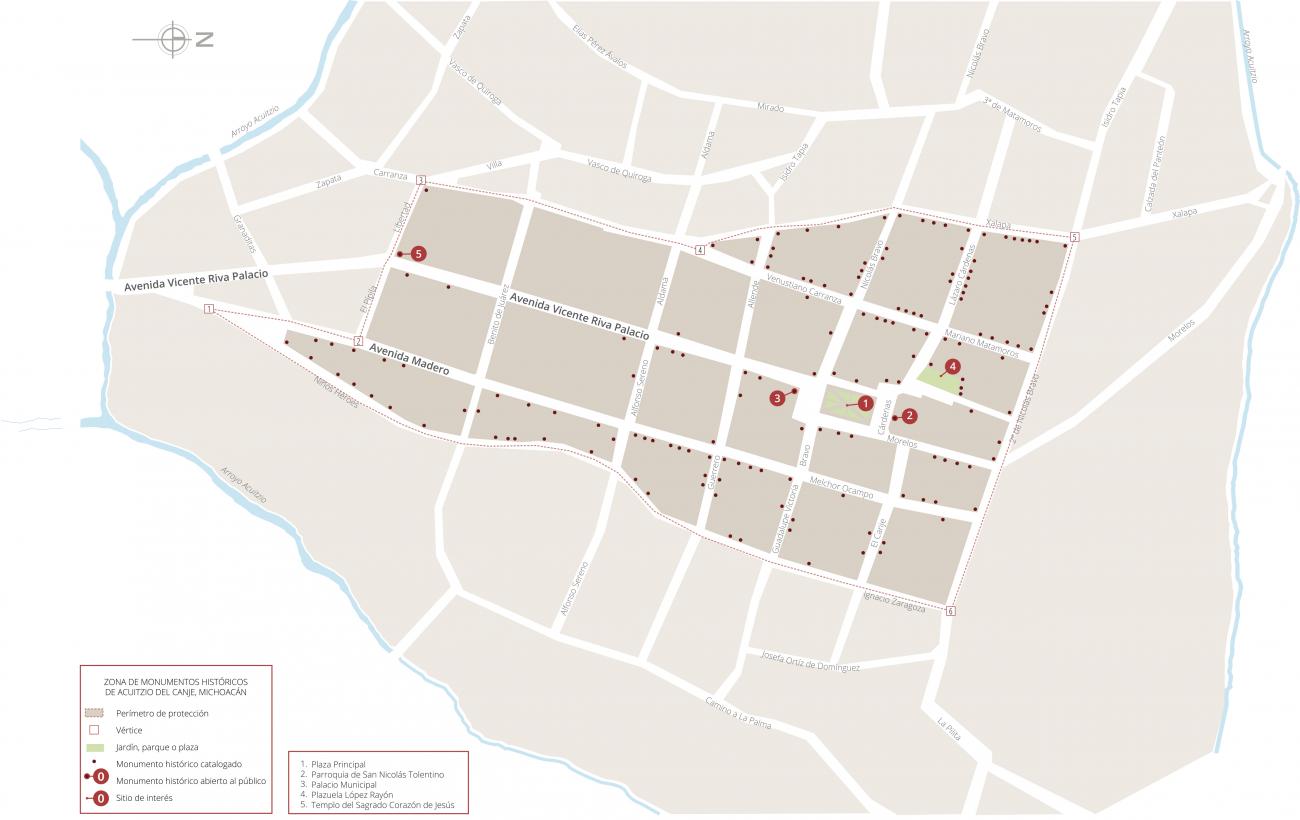Acuitzio del Canje
Historical Monuments Zone
Abstract
During the French Intervention Acuitzio del Canje was the place where an exchange of Belgian and French prisoners for Mexicans took place. Today it is a town that is distinguished by its old church and its traditional patron saint celebrations in honor of San Nicolás Tolentino, held during the first days of September.
In the Purépecha language “Acuitzio” means “place of snakes”. In 1901 the State Congress added the name “del Canje” (meaning “of the exchange”), since during the French Intervention the then governor of Michoacán, Vicente Riva Palacio, carried out the prisoner swap of Mexicans for Belgian and French prisoners at this site on December 5, 1865.
With an area of 180 km2, Acuitzio del Canje is located 30 minutes from the city of Morelia, in the center of the State of Michoacán. During pre-Hispanic times, in an area close to the present-day territory of this town, there was a Nahua settlement called Coatepec. After the Spanish conquest, Acuitzio was an indigenous town that was part of the Tiripetío encomienda granted by the King of Spain to Juan de Alvarado. He brought with him the first Augustinian friars who founded a school known as the “Casa de Estudios Mayores” to evangelize the indigenous people of the region.
The population and territory of Acuitzio increased at the beginning of the 17th century as a result of the viceroy’s mandate that inhabitants of other towns should move there. This led its indigenous rulers to claim their political autonomy from Tiripetío. This request was viewed favorably thanks to the fact that, by the middle of the 17th century, the town had a church with altarpieces, altars and hermitages where the feast of San Nicolás, patron saint of the town and other religious festivals were celebrated.
By 1660 Acuitzio achieved its independence from Tiripetío, and a time of economic prosperity began, based on the cultivation of wheat, the production of cheeses, and the raising of cattle and chickens. A century later, the increase of mestizo, criollo and casta settlers led to a series of conflicts as the indigenous rulers sought to subdue the new inhabitants under their authority. In 1856, with Mexico already an independent country, Acuitzio was elevated to the category of municipality.
The traditional patron saint’s festival of Acuitzio, in honor of San Nicolás Tolentino, takes place over the first ten days of September, with processions and masses in the Augustinian temple located on the Main Square, as well as a kermesse, dances and fireworks. During this celebration, the local bakers make special breads, which are blessed and given as a sign of good wishes.
In 2001, Acuitzio del Canje was declared a Zone of Archeological, Artistic, and Historical Monuments. The Zone of Historical Monuments has an area of 0.27 km2 formed by 24 blocks with buildings constructed between the 16th and 19th centuries, including most notably the Municipal Palace, the Church of San Nicolás Tolentino, and the Sanctuary of the Sacred Heart of Jesus.
The streets in this zone lead towards an open space formed by two plazas that impose a hierarchy on the urban layout, with the most important buildings in terms of scale, proportion and construction technique set around them.



